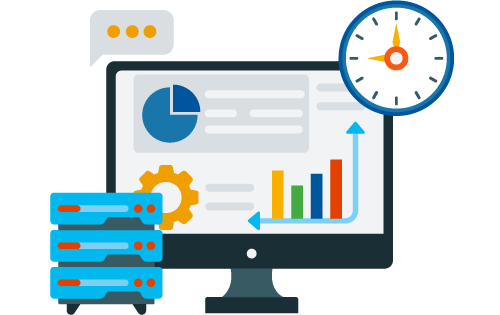Why Insightful Data is Key to Smarter Business Decisions
Built For


Why Insightful Data is Key to Smarter Business Decisions
In the hyper-competitive business world, making the right decisions can differentiate between thriving and surviving. But how do you know if you’re making the right choices? That’s where insightful data comes into play. Unlike raw numbers that just sit there, insightful data tells a story—one that helps you make smarter, more informed business decisions.
From predicting customer trends to optimizing inventory levels, insightful data is what every business needs. When businesses tap into the power of analyzed and contextualized data, they’re able to see beyond the surface and make decisions that push them ahead of the competition.
In this article, we’ll explore why insightful data is vital for unlocking more innovative business strategies and how you can start using it to your advantage.
What Is Insightful Data?
Insightful data goes beyond raw figures and statistics. It’s not just about collecting mountains of data—it’s about making sense of that data in a way that informs your decisions. Insightful data is data with context, analysis, and relevance. It tells you the “why” behind the numbers, offering a deeper understanding rather than surface-level information.
For example, if your raw data shows a drop in sales, insightful data will reveal the reason behind it. It could be a seasonal trend, a supply chain hiccup, or even customer feedback pointing to a product issue. By turning data into insight, businesses can understand patterns, identify trends, and take proactive steps to improve.
Insightful data drives action. It helps businesses see the complete picture and avoid relying on guesswork. It becomes a powerful tool for strategic decision-making and long-term success when used effectively.
The Role of Insightful Data in Decision-Making
Insightful data is your best friend when making business decisions. It removes the guesswork and lets you base your strategies on facts, not gut feelings. Insightful data provides the foundation for more innovative, more confident decision-making, whether you’re deciding how much stock to order, which products to promote, or how to optimize your operations.
For instance, think about inventory management. By analyzing insightful data, you can predict demand more accurately, avoiding the pitfalls of overstocking or understocking. This not only saves costs but also ensures that you’re always ready to meet customer needs. Similarly, sales data can help identify which products are flying off the shelves and which might need a little extra marketing push.
Real-time data also plays a crucial role here. With up-to-date insights, you can quickly adapt to changes in the market or within your business. Whether adjusting pricing, shifting marketing efforts, or tweaking operational processes, having insightful data at your fingertips allows you to pivot in ways that keep you ahead of the competition.
Insightful data enables businesses to make strategic choices backed by accurate, actionable information—decisions that can improve performance, reduce costs, and lead to long-term growth.
How Insightful Data Improves Operational Efficiency

Insightful data isn’t just for strategic decisions—it can also improve day-to-day operations. By analyzing data that reveals inefficiencies, businesses can streamline processes, save time, and reduce costs. The result? – a more efficient operation that runs like a well-oiled machine.
For example, insightful data can help identify bottlenecks in your supply chain or production process. It could be a recurring delay with a specific supplier, or a particular product that always takes longer to assemble than anticipated. With the correct data, you can pinpoint precisely where the hold-up is happening and adjust to keep things moving smoothly.
Another area where insightful data boosts efficiency is in resource allocation. By analyzing data on customer order patterns, you can ensure that your resources—whether people, machines, or materials—are being used most effectively. This not only reduces waste but also improves overall productivity.
Additionally, by using data to anticipate changes in demand, you can optimize your inventory and supply levels to avoid shortages or excess stock. This efficiency leads to lower carrying costs and faster order fulfillment, which ultimately means happier customers.
Insightful data helps businesses fine-tune their operations, eliminate waste, and create a more efficient, productive environment.
Tools for Turning Data into Insights
Turning raw data into actionable insights doesn’t happen by magic—it requires the right tools. With the growing amount of data businesses handle daily, using software to gather, analyze, and visualize that data is crucial for making more intelligent decisions.
Inventory and order management software is one of the most effective tools for transforming data into insights. This software does more than just track stock or manage orders—it provides valuable insights into sales trends, inventory levels, and operational performance. By analyzing this data, businesses can better forecast demand, optimize inventory, and identify areas for improvement.
Additionally, integration with other systems is critical to take data to the next level. Connecting your inventory management software with platforms like QuickBooks and eCommerce sites allows you to centralize data and get a complete picture of your business. This unified data can be analyzed to uncover trends, track performance across channels, and support more informed decisions.
The right tools help you gather data and transform it into meaningful insights that drive efficiency, growth, and more innovative strategies.
Best Practices for Using Insightful Data

To fully unlock the potential of insightful data, following a few best practices is essential. These guidelines will help ensure that your data is accurate but also meaningful, actionable, and relevant to your business needs.
Collect the Right Data
Not all data is created equal. Whether it’s customer behavior, inventory turnover rates, or sales performance, gather data that provides real value and can guide decision-making.
Ensure Data Accuracy
The quality of your insights depends on the accuracy of your data. Add tools to your software, such as barcoding or EDI, that eliminate or reduce human errors in data collection. Regularly clean your data to eliminate errors, duplicates, or outdated information. Accurate data helps you avoid making misguided decisions based on faulty information.
Leverage Historical Data
While real-time data is crucial, don’t overlook the power of historical data. Analyzing past trends can help you predict future patterns, whether seasonal demand, customer preferences, or supply chain disruptions. This balance between historical and real-time data is vital for long-term planning.
Use Data Across Departments
Insightful data shouldn’t be siloed. Consolidate data from all platforms into inventory and order management software to be shared across departments—sales, marketing, operations, and finance can all benefit from the same insights. This creates a unified, data-driven culture where the entire team works towards the same goals with the same information.
Turn Insights into Action
Data is only as valuable as the action it inspires. Once you’ve identified patterns or trends, make sure you’re using that insight to drive change. Whether it’s optimizing inventory, tweaking marketing strategies, or improving customer service, the real power of insightful data lies in its ability to spark informed actions.
By following these best practices, you can ensure that your data isn’t just numbers on a screen—it’s a powerful tool that drives more intelligent, more efficient business decisions.
Call us at 817-870-1311





